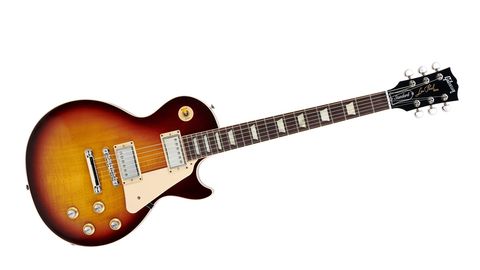You might say it’s fitting that 60 years after producing what many believe to be the definitive electric guitar - the 1959 Les Paul Standard - Gibson, now under new management, has given its USA production range a makeover that hopefully signals a return to form.
Plagued by business issues, wavering quality, some would say idiotic features... it’s fair to say Gibson had lost its way. At this year’s NAMM show back in January, however, a reorganised line was premiered that clearly addressed many issues from the old regime. The new range splits the guitars into two collections, Original and Modern, replacing the previous Traditional and High Performance ranges. The former collection is where you’ll find contemporary versions of guitars that many of us grew up with: the Les Paul Standard, SG, Special, Junior, Flying V and Explorer. Although they’re not vintage reissues, there’s no truck with modernism here.
Rightly, however, Gibson has retained many features that have been accepted by players - for example, weight relief and expanded sounds - that now reside in the Modern collection. Here, we see the new Les Paul Modern, for example, alongside existing instruments such as our Les Paul Classic and Tribute, the Studio and the start-up Les Paul Junior Tribute DC. So, let’s dip into ‘new Gibson’.
Build
‘Don’t mess with the standard’ were words that fell on deaf ears in terms of Gibson’s previous management. Thankfully, the new team has listened. Effectively now within the Original Collection, the previous Les Paul Traditional has been split into two and renamed Standard: in 50s and 60s flavours. The guitars are identical in build with one-piece slab sawn mahogany backs (with no weight relief ), quarter-sawn mahogany necks (with short tenons), and mildly figured two-piece centre-joined maple tops.
The major construction difference lies in the neck shape with a Slim Taper for the ’60s model. The ’60s emulates the popular retrofit Grover Rotomatics and uses a modern fitting with a large hexagonal bolt on the front. When it comes to pickups, the ’60s shows off a Burstbucker 61R (neck) and 61T (bridge), presumably the same as the Classic’s but with additional covers.
Sounds
There are a few minor issues, from rather sharp edges to the (Graph Tech TUSQ) top nuts, very dry and light-coloured fingerboards, and the odd groove in the nut that just needs a couple of strokes of a fret file. Frets fall into a medium size, approximately 2.28mm wide with a height that’s around 1.15mm. It certainly gives all our ’Pauls quite a classic feel. This model is nicely set up with a slight fingerboard relief of 0.152mm (0.006-inch).
The ’60s has a relatively flat-backed, thin-depth’d D-like shape. The ’60s is a little softer in sound then the recently reviewed 50s model in a good way with subtly more depth of tone. The ’60s has a slight kick and is similar in sound to the recently-released Classic.
Things don’t change overnight and this Les Paul doesn’t feel or sound particularly different to any samples we’ve played over the past couple of years. It could do with a little bit of love, as we’ve described, but there’s certainly nothing major. If you’re particular about weight, however, especially if you’re buying online, make sure you ask. As ever, nothing beats trying out a selection in person, especially as in this quartet where, even with subtly different specifications, there’s quite a bit of crossover between the latest Les Pauls.
Neck shape alone, however, might have you going for the ’60s Standard, but the Classic is virtually identical, cheaper, and has some useful additional sounds should you need them.


